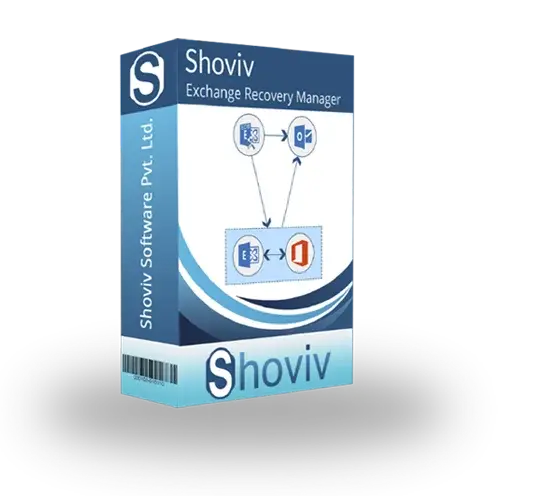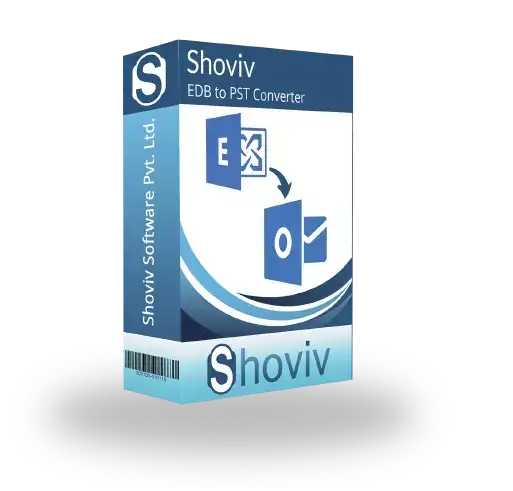How to Use Exchange Recovery Manager Tool for Efficient Email Recovery

Strong 8k brings an ultra-HD IPTV experience to your living room and your pocket.
In today's corporate environment, email communication is crucial for day-to-day operations. Microsoft Exchange Server is widely used for managing organizational emails, calendars, contacts, and tasks. However, data corruption, accidental deletion, or server failures can lead to significant email data loss, impacting business productivity. This is where an efficient Exchange recovery solution becomes a necessity. One such powerful tool that has gained popularity among IT professionals and administrators is the Shoviv Exchange Recovery Manager.
What is Shoviv Exchange Recovery Manager?
Shoviv Exchange Recovery Manager is a comprehensive software solution designed to recover, repair, and migrate Exchange Server mailboxes. It supports both offline and online Exchange Recovery, making it a versatile tool for handling corrupted or inaccessible Exchange database (EDB) files and other related data formats.
The tool is highly regarded because it simplifies complex recovery tasks through an intuitive interface, making it accessible even to users without deep technical expertise. Moreover, it supports a variety of Exchange Server versions, including Exchange 2019, 2016, 2013, 2010, and earlier versions.
Key Features of Shoviv Exchange Recovery Manager
- EDB File Recovery: Efficiently repairs corrupted or damaged Exchange database files and recovers mailbox data, including emails, contacts, calendars, tasks, and journals.
- Multiple Export Options: Export recovered data to Office 365, Live Exchange Server, Outlook PST files, or MSG files for flexible data management.
- Support for Multiple Mailbox Types: Recover data from user mailboxes, archive mailboxes, and public folders.
- Preview & Selective Recovery: Before exporting, users can preview mailbox contents and selectively restore items based on their needs.
- Batch Recovery and Migration: Supports batch processing of multiple mailboxes simultaneously, saving time and effort during recovery or migration processes.
- No Size Limitations: Handles large-sized EDB files without affecting performance, making it suitable for enterprise-level recovery tasks.
- User-friendly Interface: Designed for easy navigation and minimal training requirements, helping users recover data quickly and efficiently.
How to Use Shoviv Exchange Recovery Manager: Step-by-Step Guide
Here is a simple guide to using the Shoviv Exchange Recovery Manager tool for recovering Exchange Server mailboxes:
Step 1: Download and Install the Tool
First, download the latest version of Shoviv Exchange Recovery Manager from the official website. Follow the instructions to install the software on your Windows machine.
Step 2: Launch the Tool and Add Corrupt EDB File
Open the tool and choose the option to add an Exchange database file. Browse and select the corrupted or damaged EDB file you want to repair and recover.
Step 3: Preview Mailbox Data
Once the file is loaded, the tool scans and displays all mailbox folders and items in a tree-view format. You can expand folders to preview individual emails, contacts, calendar entries, and more.
Step 4: Select Items for Recovery
You can choose specific mailboxes or individual items that need recovery. This selective recovery feature ensures you extract only the required data, saving time and storage space.
Step 5: Choose Export Option
Shoviv offers multiple export options. Depending on your needs, select whether you want to export to:
- Outlook PST file for offline access,
- Directly to Office 365 mailbox,
- Live Exchange Server mailbox,
- Or MSG files.
Step 6: Configure Export Settings
Configure the export settings such as the destination mailbox or file path. You can also apply filters like date range or specific folders to narrow down the recovery scope.
Step 7: Start the Export Process
Click on the "Export" button to initiate the recovery and migration process. The tool will process the data and export it as per your configuration.
Step 8: Verify the Recovery
After the process completes, verify the restored data in the destination. You will find all your recovered emails and other mailbox contents fully intact and accessible.
Why Choose Shoviv Exchange Recovery Manager?
Recovery of Exchange mailboxes can be a technically demanding and time-sensitive process. Shoviv Exchange Recovery Manager stands out because it offers:
- Reliability and a high success rate in recovering severely corrupted EDB files.
- Flexibility by supporting multiple export formats that fit various organizational needs.
- Cost-effectiveness with a one-time purchase option and no hidden fees.
- Responsive technical support and detailed documentation to assist users throughout the recovery process.
Conclusion
Managing Microsoft Exchange mailbox recovery and migration can be challenging, especially during data corruption or accidental deletions. The Shoviv Exchange Recovery Manager provides an easy-to-use yet powerful solution that empowers administrators and IT teams to recover, repair, and export mailbox data reliably and efficiently. By following the steps outlined above, you can quickly restore your Exchange mailboxes and maintain business continuity without losing crucial email data.
Note: IndiBlogHub features both user-submitted and editorial content. We do not verify third-party contributions. Read our Disclaimer and Privacy Policyfor details.



